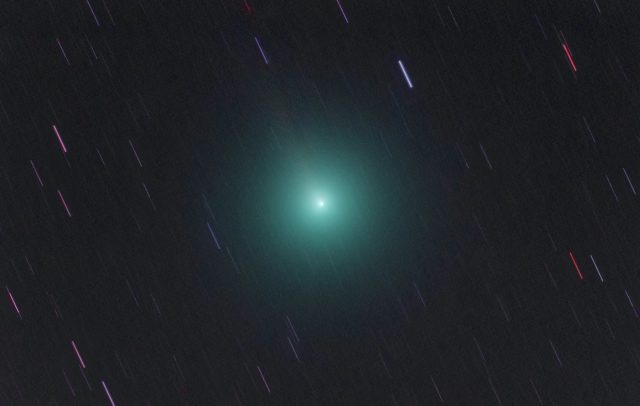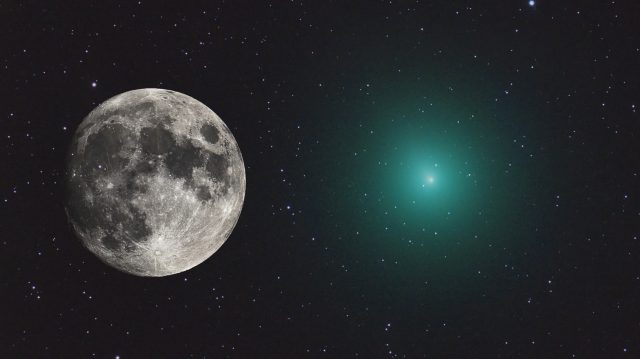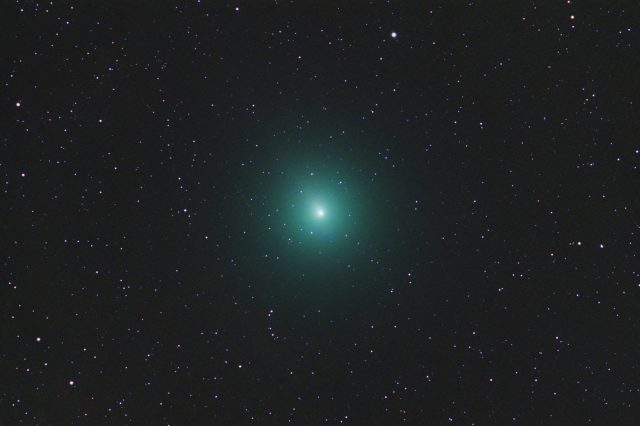
Comet Wirtanen is looking to be the best comet this season. It is a short-period comet that comes around every 5.6 years. It should be at it’s best as it passes closest to Earth:
- Occurs Dec 16, 2018
- Less than 4 days after perihelion
- The comet is near its brightest
- Geocentric Distance 0.0775 AU
- 30 Lunar distances
- 11.5 million km
- 7.1 million miles
So, it has 2 more weeks until that happens and look at the size of that thing already. It is huge! See the comparison with the moon taken with the same scope below:
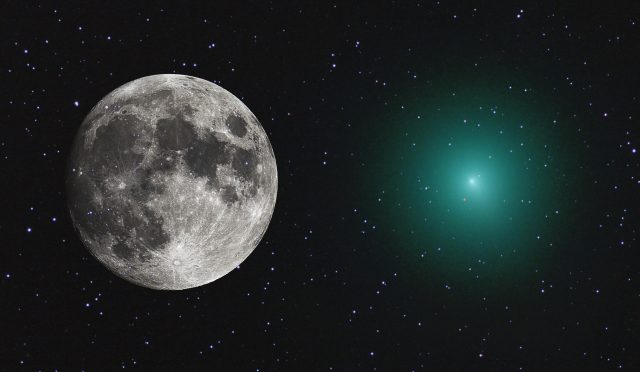
BTW, the above image appeared on the home page of SpaceWeather.com on Dec 4th and 5th, 2018 and is also featured in an article on the Televue Optics blog, which are the guys that make my scope and focal reducer/flattener. 🙂
I re-vamped the above image with the better version star-freeze image (and also with both the comet and the moon oriented north) and that is here:
I shot two sets of data for this comet. Both were 40 sub-images. The first image and the image below are from the first set. The moon/comet comparison image above was done from the second set.
Taking another crack at processing the first data set, I made this version below that has a slightly different comet position, is a little lighter and shows more coma, but less tail:
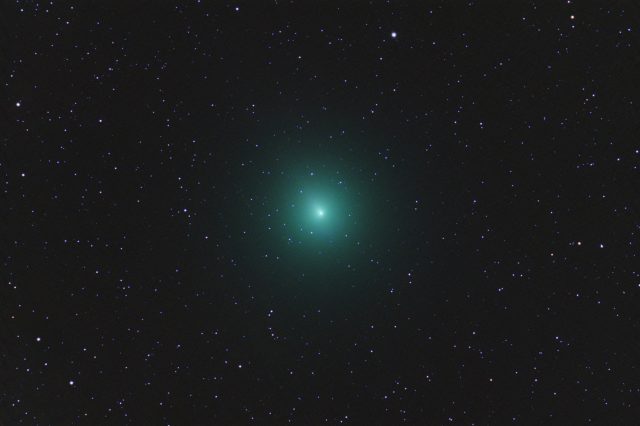
Here’s the second set of data with a star streaks and star freeze version of the comet with extra processing plus a red boost on the former and minimal processing for the latter:
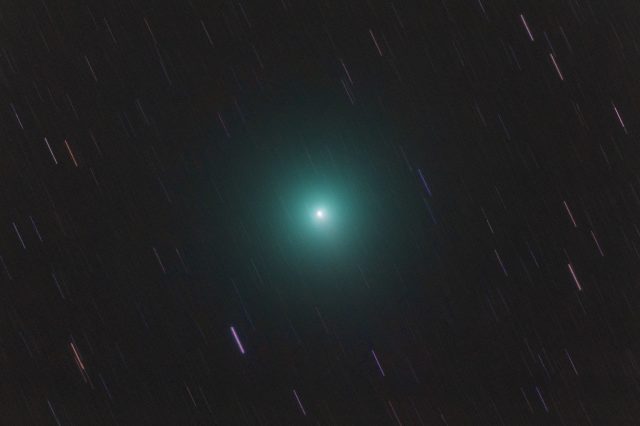
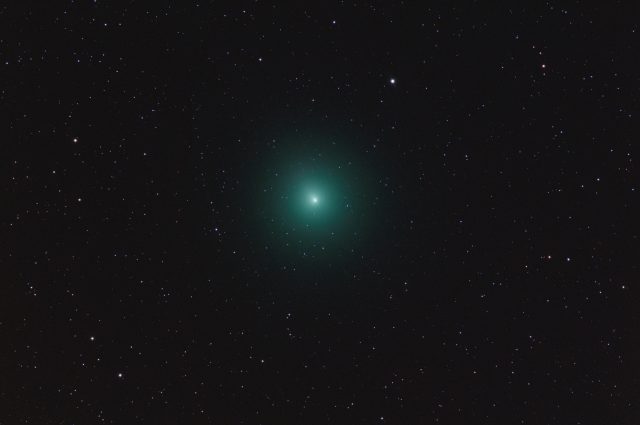
Finally, here are both sets of the comet together, but with the background stars from only one set of 40 x 2 min subs:
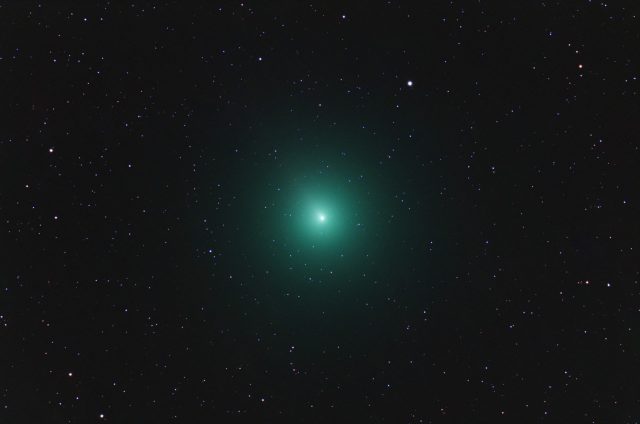
Lots more coma is visible, plus the tail from the fist set of subs shows as well. I think here we have a coma that is so bright it is blowing out the faint tail as seen in the second set above. Not as much coma was picked up when it was lower in the sky muck, but the wavelengths from the tail got through and made it more obvious, as seen in the first set of subs.
So, it is possible that shorter “core” sub-images mixed in with longer exposures to get the coma might be a way to tame this comet and get a good final image with DSLR equipment. I will try that the next time I get to image this beast.
Edit Dec 23 2018: Reprocess of 2nd set of 120 sec ISO 3200 shots and added in all other data taken that night.
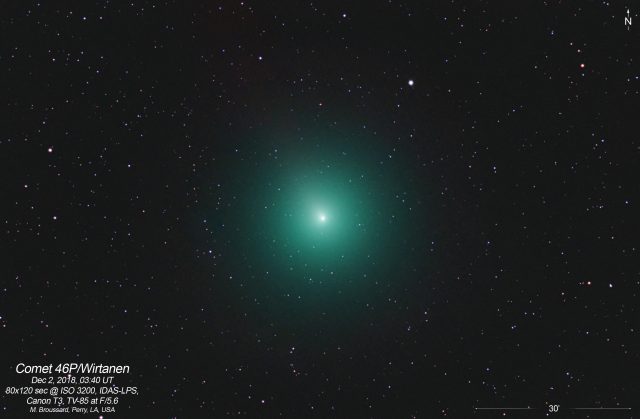 I just knew there was more there. I just had to strive for the right stretch and do selective red channel boosting. The tail was mostly in the red channel and that gets clipped a bit with the removal of LP and background noise. So, I had to leave as much as possible of the red in the tail area but suppress it everywhere else. Some selective masks for various saturation and color balance adjustments did the trick.
I just knew there was more there. I just had to strive for the right stretch and do selective red channel boosting. The tail was mostly in the red channel and that gets clipped a bit with the removal of LP and background noise. So, I had to leave as much as possible of the red in the tail area but suppress it everywhere else. Some selective masks for various saturation and color balance adjustments did the trick.
Edit Dec 27, 2018:
I had a chance to take another crack at the star-streaks version of the image with the above data and considerations and also added Larson Sekanina filtering for the tail:
